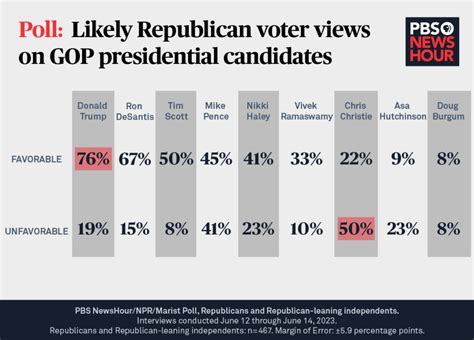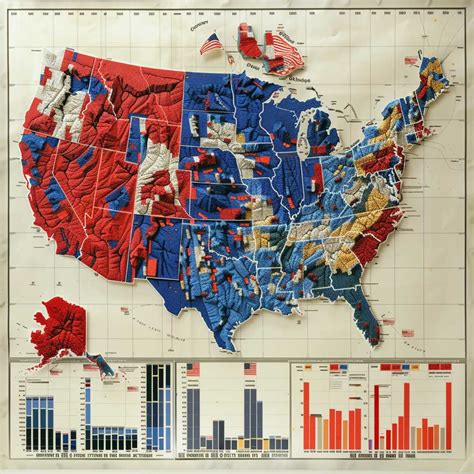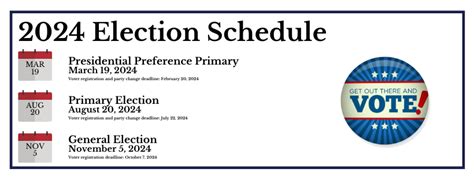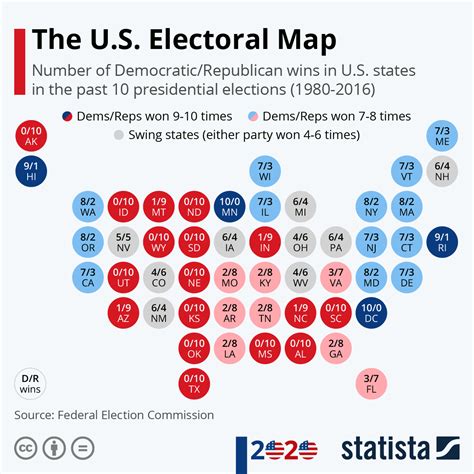Explore essential insights into live election polls, their impact on voter behavior, and the methods that influence accurate and reliable results.In today’s fast-paced political landscape, live election polls play a pivotal role in shaping voter decisions and perceptions. As an essential tool for gauging public sentiment, these polls provide timely insights into the evolving electoral narrative. Whether you’re a seasoned voter or casting your ballot for the first time, understanding how live election polls work can enhance your ability to engage in informed discussions. From dissecting the influence of various polling methods to examining the factors that affect the accuracy and reliability of results, this article aims to clarify the complexities of live election data. Join us as we delve into essential insights about live election polls, their impact on voter behavior, and how to interpret the trends and predictions that can guide your political choices.
Understanding Live Election Polls: Essential Insights for Voters
As we dive into the topic of Exploring Live election polls, it’s crucial to grasp the fundamental mechanics behind how these polls operate and the information they provide. Voters must recognize that live election polls are conducted in real time, capturing a snapshot of voter sentiment at a specific moment. This immediacy comes from the ability to sample a diverse group of voters using various polling methods such as phone interviews, online surveys, and in-person polls.
Understanding how these polls are structured and the demographics of those surveyed is vital. Pollsters aim for a representative sample to ensure the results reflect the broader voting population accurately. This requires careful attention to factors such as geographic location, age, gender, and political affiliation.
It is also important for voters to interpret the data critically. Live election polls are often reported in percentages, indicating the support for different candidates or measures. However, these numbers should be considered alongside their margins of error, which provide a range indicating the potential variability of the results. A candidate leading by 2% within a poll’s margin of error might indicate a more competitive race than it appears at first glance.
Furthermore, voters should be aware of the timing of polls. Polls conducted closer to election day may reflect shifts in public opinion as the voting date approaches, influenced by current events or debates. Therefore, it’s wise to track trends over time rather than focusing solely on individual snapshots.
As voters navigate the landscape of Exploring Live election polls, it’s important to remain informed and discerning about what these polls represent. By understanding their methodology and the context of the data, voters can better gauge the electoral climate and make informed choices as they head to the polls.
How Polling Methods Influence Live Election Results
When exploring live election polls, it’s crucial to understand how the different polling methods can significantly shape the outcomes and perceptions of these results. Various methodologies can lead to vastly different interpretations of voter sentiment, which can, in turn, affect voter behavior and decision-making.
Polling methods can be categorized mainly into three types: traditional telephone surveys, online polls, and exit polls. Each has its strengths and weaknesses:
| Polling Method | Strengths | Weaknesses |
|---|---|---|
| Telephone Surveys | Reach a broad demographic; more personal interaction | Costly; potential bias in respondent selection |
| Online Polls | Cost-effective; fast results; wider participation | Sample bias; accessibility issues for certain demographics |
| Exit Polls | Immediate feedback on voter choices; insightful trends | Limited to in-person voters; can misinterpret due to non-response |
The choice of polling method can lead to conflicting results, particularly when voters’ preferences are not just quantitatively captured but also qualitatively interpreted. For example, online polls might capture a younger demographic, while telephone surveys tend to engage older voters, thus leading to skewed representations of public sentiment.
The timing of polls also plays a crucial role. Polls conducted closer to election dates are often more reflective of current voter attitudes since they account for the most recent campaign developments and voter interactions. However, polls taken earlier can provide baseline data that helps analysts track shifts over time.
When exploring live election polls, it’s essential to consider the methodologies behind them. Different methods can lead to varied outcomes and interpretations, influencing both public opinion and electoral results. Understanding these dynamics can empower voters to critically assess the information presented to them during the election cycle.
The Impact of Live Polls on Voter Perception and Behavior
Live election polls play a significant role in shaping voters’ perceptions and behaviors during an election cycle. These polls provide real-time data that can influence how voters perceive the viability of candidates and parties. Here are several key ways in which exploring live polls affects voter behavior:
- Shaping Perceptions: Live polls can create a narrative around whom the public believes to be a frontrunner. When certain candidates consistently lead in polls, it can create a perception of legitimacy and support, making it more likely for undecided voters to support them.
- Bandwagon Effect: Voters may feel compelled to support candidates who are perceived as popular or likely to win based on polling data. This phenomenon, known as the ‘bandwagon effect,’ can significantly shift the dynamics of an election race.
- Motivation to Vote: Live polling outcomes can motivate voters who support less favored candidates to rally and participate in the election. Conversely, they may discourage voters from supporting a candidate perceived as unlikely to win.
- Influence on Campaign Strategies: Candidates and their campaigns closely monitor live polls to adapt their strategies. A sudden change in poll results may lead a candidate to alter their message, focus on different issues, or increase outreach efforts in specific demographics.
- Media Coverage: Media outlets often amplify polling results, which can further influence public perception. If a particular candidate’s poll numbers are highlighted in the news, it can lead to increased visibility and recognition that he or she may not have achieved otherwise.
- Social Media Engagement: With the rise of social media, live polling data is widely shared and discussed online, often leading to heightened engagement and conversations among voters, ultimately swaying opinions and behaviors.
The impact of live polls extends beyond mere numbers. By exploring live election data, voters gain insights that can significantly affect their choices and, ultimately, the election outcome. Understanding how these elements intersect helps voters make informed decisions as they head to the polls.
Exploring Live Election Data: Interpreting Trends and Predictions
When Exploring Live election data, it is crucial to understand how to interpret various trends and predictions. Live election polls provide real-time insights, but these results require careful analysis to extract meaningful information. Here’s a breakdown of how to interpret live election data effectively.
1. Analyzing Poll Numbers
The first step in interpreting live election data is to analyze the poll numbers themselves. Look for trends over time rather than focusing solely on individual data points. For instance, if a candidate has been steadily rising in the polls, it may indicate increasing voter support. Conversely, a sudden drop could signify a change in public sentiment.
2. Understanding Sample Size and Composition
Each poll has a sample size and demographic composition that can heavily influence the results. A larger, more diverse sample can provide a more accurate reflection of voter sentiment. It’s important to assess whether the sample size is adequate and whether it aligns with the demographic makeup of the electorate.
3. Evaluating Margin of Error
Most live election polls come with a margin of error, which affects the reliability of the results. Understanding this margin helps in gauging the potential range of outcomes. A small margin of error indicates more reliability, whereas a larger margin can make the results less dependable.
4. Tracking Changes Over Time
By looking at historical data and tracking changes in polling over time, voters can gain insights into shifting trends. A consistent upward or downward trajectory can signal how public opinion is evolving leading up to the election.
5. Comparing Multiple Polls
Don’t rely on a single poll. Exploring live election data from various sources can provide a more holistic view. Different polling organizations may employ different methodologies leading to variations in results. Comparing these polls allows for a more nuanced understanding of voter sentiment.
6. Contextual Factors
External factors such as current events, candidate debates, and social issues can affect polling results. Understanding these contexts can help in interpreting the significance of the data. For instance, a policy announcement or a major news event can lead to a rapid shift in public opinion.
Exploring Live election data involves a comprehensive analysis of numbers, context, and methodologies. By understanding how to interpret these trends and predictions, voters can make informed decisions as they approach the polls.
Key Factors That Affect Live Election Poll Accuracy and Reliability
When Exploring Live election polls, it is crucial to understand the various factors that contribute to their accuracy and reliability. Polls are an essential tool for gauging public opinion, but they can be influenced by numerous variables. Here are some key factors to consider:
| Factor | Description |
|---|---|
| Sample Size | A larger sample size often leads to more reliable results as it minimizes the margin of error. |
| Sampling Method | The technique used to collect responses (e.g., random sampling versus convenience sampling) can significantly affect poll outcomes. |
| Question Wording | Leading or ambiguous questions can bias results, highlighting the importance of neutral wording. |
| Timing | The timing of the poll can influence responses, especially if conducted close to a major political event. |
| Respondent Selection | Who participates in the poll can skew results—considering demographics such as age, gender, and income is vital. |
| Mode of Survey | Whether the poll is conducted via phone, online, or in-person can also impact how respondents engage with the questions. |
By considering these factors, voters can better assess the value and implications of live election polls, leading to more informed voting decisions during electoral processes. Understanding these elements also emphasizes the importance of scrutinizing poll methodologies when Exploring Live results.
Frequently Asked Questions
What are live election polls?
Live election polls are real-time surveys that capture voter sentiment and preferences during an election period, providing insights into how likely voters are to support different candidates or referendums.
How are live election polls conducted?
Live election polls are typically conducted through various methods, including telephone interviews, online surveys, and in-person polling stations, using a representative sample of the voting population.
Why are live election polls important for voters?
Live election polls help voters gauge the current political landscape, understand trends, and make informed decisions before casting their votes.
What factors can affect the accuracy of live election polls?
The accuracy of live election polls can be influenced by sample size, polling methodology, timing of the poll, and the dynamic nature of voter opinions which can change right up until Election Day.
Can live election polls predict actual election outcomes?
While live election polls provide valuable insights, they are not always accurate predictors of election outcomes due to factors like last-minute voter changes and turnout disparities.
How should voters interpret conflicting poll results?
Voters should analyze multiple polls to get a broader perspective, considering factors like sample size, methodology, and the timing of each poll, rather than relying on a single result.
What role do social media and technology play in live election polling?
Social media and technology enhance live election polling by facilitating faster data collection and analysis, as well as providing platforms for audience engagement and feedback during the polling process.









